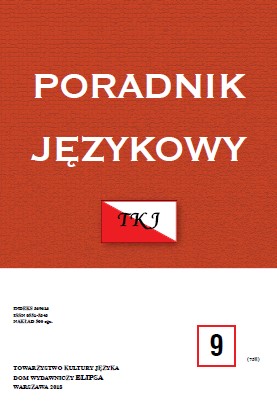MNIE CZY MI ? O UŻYCIU ZAIMKA PIERWSZEJ OSOBY W CELOWNIKU
MNIE OR MI (ME)? ON THE USE OF THE 1ST PERSON PRONOUN IN THE DATIVE CASE
Author(s): Hélène WłodarczykSubject(s): Theoretical Linguistics, Morphology, Semantics, Western Slavic Languages, Philology
Published by: Dom Wydawniczy ELIPSA
Keywords: Polish language; mnie; mi (me); Prosodic and morphological characteristics; enclitic; orthonic;
Summary/Abstract: Contemporary native Polish speakers experience difficulties with the choice of one of the two possible forms of the dative case of the 1st person singular pronoun (mnie or mi). Based on prosodic and morphological characteristics, two variants, called enclitic and orthotonic, are usually distinguished in the inflection of personal pronouns. This paper presents the pragmatic conditions underlying the use of orthotonic and enclitic forms of personal pronouns as part of the Meta-Informative Centering Theory (MIC). These conditions refer, among others, to phrases pointing to the speaker’s attention and directing the listener’s attention. Then, on the basis of Polish language history and the comparative grammar of Slavic languages, a hypothesis is put forward in order to explain how the alteration of the grammatical norm came about. In the last decades, the form mi has been used more and more ambiguously (either as enclitic or orthotonic) just as is the case with the 1st person singular genitive-accusative form mnie. The cause of this situation is probably the disappearance of the enclitic form mię. Hence, a new paradigm of the inflection of the 1st person singular pronoun is emerging with only one dative form mi. This new paradigm is thus comparable to that of the 1st person plural pronoun where there has only ever existed one dative form nam.
Journal: Poradnik Językowy
- Issue Year: 2018
- Issue No: 09
- Page Range: 64-80
- Page Count: 17
- Language: Polish
- Content File-PDF

